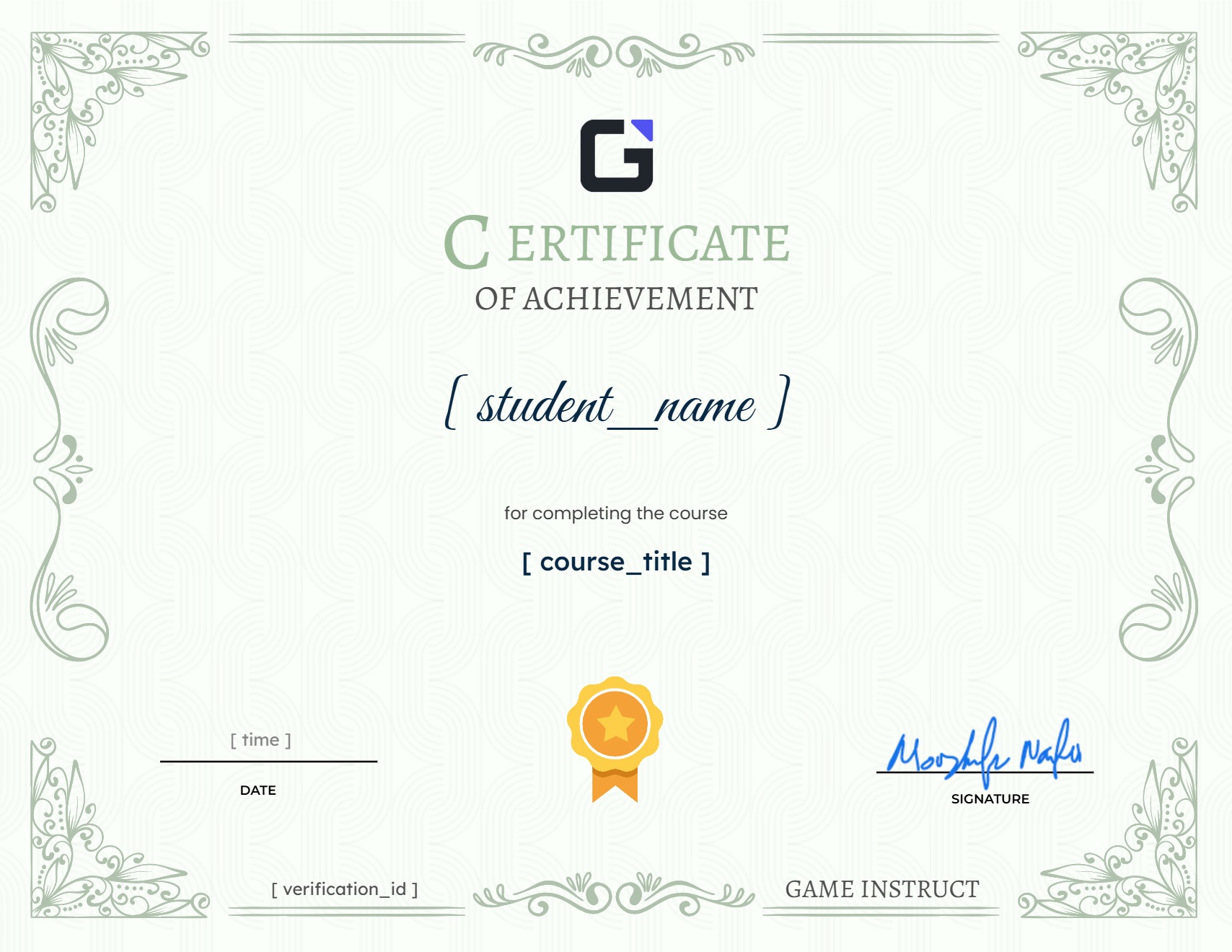Unreal Engine 5 Course – For Complete Beginners
About Course
Unreal Engine 5 course for complete beginners
Jump into game development with Unreal Engine tutorials made for complete beginners. Learn how to use Unreal Engine 5 by creating a realistic and game-ready environment with the latest tools like Nanite, Lumen, and Quixel Megascans. As bonus content, you will also make a small platformer game with no prior experience using Unreal Engine blueprint visual scripting. No boring theory, only hands-on experience.
You will learn how use Unreal Engine 5 step-by-step, specifically how to:
- Install Unreal Engine 5 and set up your first project
- Navigate the Unreal Engine interface
- Build a realistic and game-ready environment with free Unreal Engine assets using Quixel MegaScans and Quixel Bridge.
- Light your scene professionally with Lumen.
- Design and optimize beautiful levels using Nanite.
- Apply audio and visual effects.
- Make a platformer game using Unreal Engine 5 Blueprints
Taught by a professional game developer
With 9 years of experience, I’ve released a full Steam game, created 11+ courses for over 40,000 students (average rating: 4.8+), and am currently developing. Farmtale 2. I specialize in Unreal Engine blueprint visual scripting, lighting, game optimization, and more. This course is built on real-world experience.
Join our supportive and friendly community!
Learning Unreal Engine and game development in general can be frustrating at times. You might forget an unchecked box somewhere, leaving you feeling lost for hours or need moral support and ideas from fellow game developers like yourself. That’s why we offer live support 24/7 on our community Discord server. Join us today and be a part of a community with like-minded people. We are always here to help you whenever you need it.
Getting started with Unreal Engine 5 has never been easier
Enroll and start your unreal learning today. Read more about the Engine here.
Want to expand your skills?
If you’re curious about 2D games, dive into How to Make a Platformer Game in Unreal Engine 5 (2D). You’ll master essential mechanics like jumping, double-jumping, and moving platforms—all designed to help beginners create their very first polished platformer!
Course Content
01. Introduction
-
01:19
-
01:47
-
01:54
02. Unreal Engine Overview
03. Initial Project Setup
04. Quixel Megascans
05. Materials & Textures
06. Level Design
07. Lighting (Unreal Lumen)
08. Game Optimization
09. Audio
10. Presentation
11. Introduction to Unreal Blueprint
Earn a certificate
Add this certificate to your resume to demonstrate your skills & increase your chances of getting noticed.

Student Ratings & Reviews
